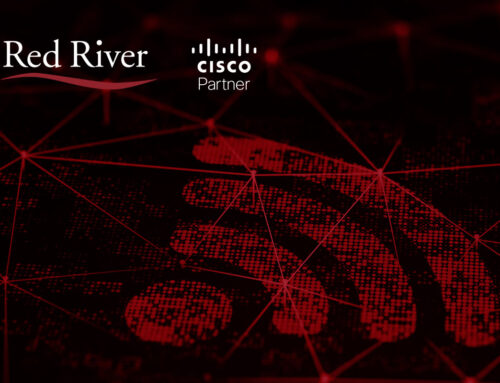
Using Azure Privileged Identity Management to Enhance Security
Changing times call for determined cybersecurity solutions, and Azure privileged identity management (PIM) delivers data theft protections. Technologies seem to be advancing at light speed, rapidly transforming the way organizations do business. Of the world’s Fortune 500 companies, more than 460 reportedly rely on the cloud, and more than 90 percent of large corporations follow suit. So quickly have on-premises networks become an anachronism that only about half of mom-and-pop operations store their data on hard drives.
Cybercriminals follow these and other online trends, and they have pursued companies into the cloud. These cybercrime statistics demonstrate how hackers are placing increased emphasis on cloud-based vs on-premises cyberattacks.
- Phishing Schemes: Cyber incidents involving phishing attacks are nearly equal between cloud-based and on-premises systems at 73 and 74 percent, respectively.
- Compromised Login Credentials: Cloud-based users experienced a 4-percent higher rate of login credential compromises than on-premises profiles.
- Malware and Ransomware: Malicious application attacks were nearly even, with hackers hitting on-premises systems 3 percent more frequently.
- Infrastructure: Cybercriminals target cloud infrastructure 1 percent more often than in-house networks.
It’s also important to note that cloud-based cyberattacks involving data leakage, admin compromises, data theft, insider attacks and supply chain incidents occur more frequently in the cloud. In no way does this mean that organizations should revert back to on-premises networks. It does, however, highlight the fact that corporations need to adopt innovations best suited to deter, detect and expel threat actors. Azure privileged identity management works seamlessly with wide-reaching approaches to cybersecurity and cloud-based operations.
Are You Using Azure?
This Microsoft public-facing cloud computing platform provides businesses with a variety of digital services. Industry leaders can select cloud-based options in a cost-effective and scalable fashion. Fortune 500 companies and growing businesses gravitate toward Azure because it offers these four distinct cloud-computing options.
- Infrastructure as a Service (IaaS)
- Platform as a Service (PaaS)
- Software as a Service (SaaS)
- Serverless Functions
The pay-as-you-go cloud solution has proven to be a flexible platform that works with wide-reaching applications. It also has been effective at advancing the defenses and best practices of various cybersecurity models.
How Azure Privileged Identity Management (PIM) Enhances Security
The Azure identity protection system gives organizations greater control over network access, particularly valuable and confidential digital assets. It works through Microsoft Entra ID, as well as Azure and supports activities in Microsoft 365 and Microsoft Intune. What sets this PIM approach apart from others is that it is designed to take the next logical step for industry executives who have smartly adopted the zero trust, least privilege security model.
How Does Zero Trust Work?
If your enterprise has not yet upgraded to zero trust architecture, it’s worth considering, especially if you find PIM appealing. Zero trust architecture uses a least privilege concept, limiting each network user’s access to only the programs, files and data required to carry out routine tasks. If a staff member needs to access information outside the normal course of their duties, they must request profile parameter changes. An admin approves or denies such requests and may also place a time limit on approvals.
Along with data access restrictions, zero trust architecture sometimes includes microsegmentation. That essentially means digital assets are separated, and barriers are established to prevent unauthorized access. Another boon of using the zero trust model is that hackers who manage to learn someone’s username and password are equally restricted. When a cybercriminal attempts to exceed the least privilege restrictions, alerts are raised before valuable and sensitive information can be stolen.
How Does Azure PIM Work with Zero Trust?

The Azure privileged identity management approach places greater emphasis on profiles that enjoy the greatest access to critical data and digital assets. In other words, it adds a layer of protection to user profiles considered high-value targets by sophisticated threat actors. These are ways it improves cybersecurity around personal identity information, financial records, intellectual property, trade secrets and healthcare information, among others.
- Just-in-Time Privilege: This fail-safe option grants users access to specific applications and information for a limited amount of time. Following the zero trust architecture principles, admins approve requests on an as-needed basis. The wisdom behind just-in-time privilege is that it reduces the risk of hackers implementing a system takeover or infecting a network with malicious software. Managed IT professionals can also automate just-in-time requests for any period of up to 24 hours, setting parameters within acceptable risk metrics.
- Time-Bound Assignments: The privileged identity management system also allows ongoing access to areas that were previously denied. This pragmatic PIM aspect avoids the need to create an entirely new user profile for employees and stakeholders whose roles and needs have evolved. By that same token, PIM can create a sunset time for independent contractors and people working on projects with an end date. Employing temporary user access profiles that time out addresses one of the major cybersecurity failings. Busy IT departments sometimes forget to eliminate short-term network credentials. It was this very misstep that led to the 2020 Solar Winds hack that compromised thousands of companies, including the highest level of U.S. federal bureaucracy.
- Multi-Factor Authentication: The PIM approach onboards effective multi-factor authentication principles. Once an admin or automated response approves a larger role, the user receives a secondary code. Following the traditional multi-factor process that has been a thorn in hackers’ sides, final approval requires stakeholders to enter the code. Unless a cybercriminal can persuade an admin that they are a legitimate network user and gain control of that individual’s smartphone or tablet, access will ultimately be denied.
- Justifications: Although relatively low-level approvals can be automated, access to critical data typically calls for real-person assessments. Requests usually require users to provide a written explanation for requesting access to applications and files. That aspect keeps the decision-making process in the hands of a responsible leader.
Approving and denying hundreds of data privilege requests makes supervisors wonder whether departmental adjustments are in order. If staff members and independent contractors repeatedly ask for short-term access to the same information again and again, it may be prudent to make least privilege changes.
Azure privileged identity management does two things that support access efficiency. It sends key stakeholders request notifications. It also documents these requests, creating a record that can be analyzed to rethink the dissemination of information.
Azure PIM Works with Microsoft Defender for Endpoint
Microsoft appears to have synced its PIM and Defender for Endpoint devices to enhance the ability of users to harden their cybersecurity posture. Defender focuses on smartphones, laptops and remote workforce security. It provides solutions such as behavioral monitoring, advanced cloud analytics and proactive threat intelligence. The benefits of Defender include the following.
- Attack Surface Reduction
- Threat and Vulnerability Management
- Endpoint Detection and Response
- Automated Threat Assessments
Defender for Endpoint security helps insulate cloud-based networks from hackers using remote workforces and handheld devices as a back door. The added value of combining PIM and Defender gives corporations an opportunity to implement advanced least privilege access policies without worrying about endpoint exposure.
How to Adopt Azure Privileged Identity Management
Thought leaders in the cybersecurity space generally recommend establishing only impermanent data privileges, with the exception of emergency profiles. That may sound counterintuitive to those occupying upper-management positions. In all fairness, CEOs, CIOs and other professionals follow career paths that lead them to other opportunities. The point is that turnover can result in credentials lingering, creating an opportunity for external and insider hacks. That being said, these are steps to consider when deploying Azure PIM.
Create a Test Program
Begin by creating a pilot program comprised of a small group of network users. Set the access levels of your test group relatively low. Have them make requests and follow the process as they are approved or denied. Make sure everything is operational before planning a rollout of Azure PIM for the entire organization.
Communication
Poll the pilot group members to understand their experience and how the PIM improved or diminished their duties. Address concerns, make necessary adjustments and let participants know their time and efforts are valued.
Determine Privilege Levels
Azure identity protection is largely designed to enhance the security of profiles that require entrance to the most valuable and confidential information. Working with a third-party cybersecurity firm, the leadership team decides which users fall into the Azure PIM process. Based on unique organizational issues, sector and individual needs, a catalog of positions should be generated. Within that list, varying privileges are assigned. Short-term automated approvals can be established, with others requiring supervisory consideration.
Review Azure Implementation History
The privileged identity management system tracks, records and produces documents that break down access requests, approvals, denials and user roles. At the end of 30 days, consider generating a report to gain insight into workflow. If you notice repetitive requests for applications and information by individuals or people who perform a designed role, it may be worthwhile to alter their privileges. The same holds true for login profiles that allow entry to critical data that isn’t being accessed on a regular basis.
Keep in mind that zero trust architecture, least privilege policies and PIM restrict hackers who ascertain the username and password of a high-access profile. Restricting entrance through these and other cybersecurity measures serves as a fail-safe position. Even if a cybercriminal employs exhaustive methods to penetrate your system, they’ll likely walk away empty-handed.
Benefits of Deploying PIM Security Measures
The Azure privileged identity management approach places the greatest data security emphasis on profiles that enjoy unfettered admission to the most sensitive information. That laser focus makes perfect sense, given the fact that it’s precisely the digital assets hackers want to steal and sell on the dark web. Implementing Azure PIM delivers added value that includes the following.
- Visibility and Control: The security measure brings wide-reaching activities under a single umbrella. Admins have an opportunity to make decisions regarding digital asset permissions. The Azure PIM system also provides hard metrics that show request trends.
- Minimize Risk: Microsoft’s PIM builds on an effective cybersecurity posture that reduces the ability of unauthorized users to access sensitive information.
- Compliance: Zero trust architecture and its least privilege policies help organizations meet or exceed federal, state and international data protection and privacy regulations. Azure PIM adds a layer of defense around the very digital assets these regulatory compliance mandates are designed to protect.
In the event an advanced persistent threat exploits a vulnerability and infiltrates your network, PIM systems help generate alerts. Cybersecurity measures can be brought to bear in real time to detect and expel online thieves. By establishing an Azure privileged identity management system, you’ll gain greater control over who has access to sensitive information. The PIM approach reduces risk while ensuring hackers won’t be able to leverage an unused username and password to plant malware or orchestrate a ransomware takeover.
Red River Helps Organizations Integrate Effective Endpoint Cybersecurity Measures
At Red River, we work diligently with organizations to help them create a cybersecurity posture that deters, detects and repels threats to their digital assets. We routinely help cloud-based companies with remote and hybrid workforces integrate solutions such as the Microsoft Azure privileged identity management system. If you harbor concerns about who has access to vital digital assets, contact us today. Let’s get the process started.

written by
Corrin Jones
Corrin Jones is the Director of Digital Demand Generation. With over ten years of experience, she specializes in creating content and executing campaigns to drive growth and revenue. Connect with Corrin on LinkedIn.




